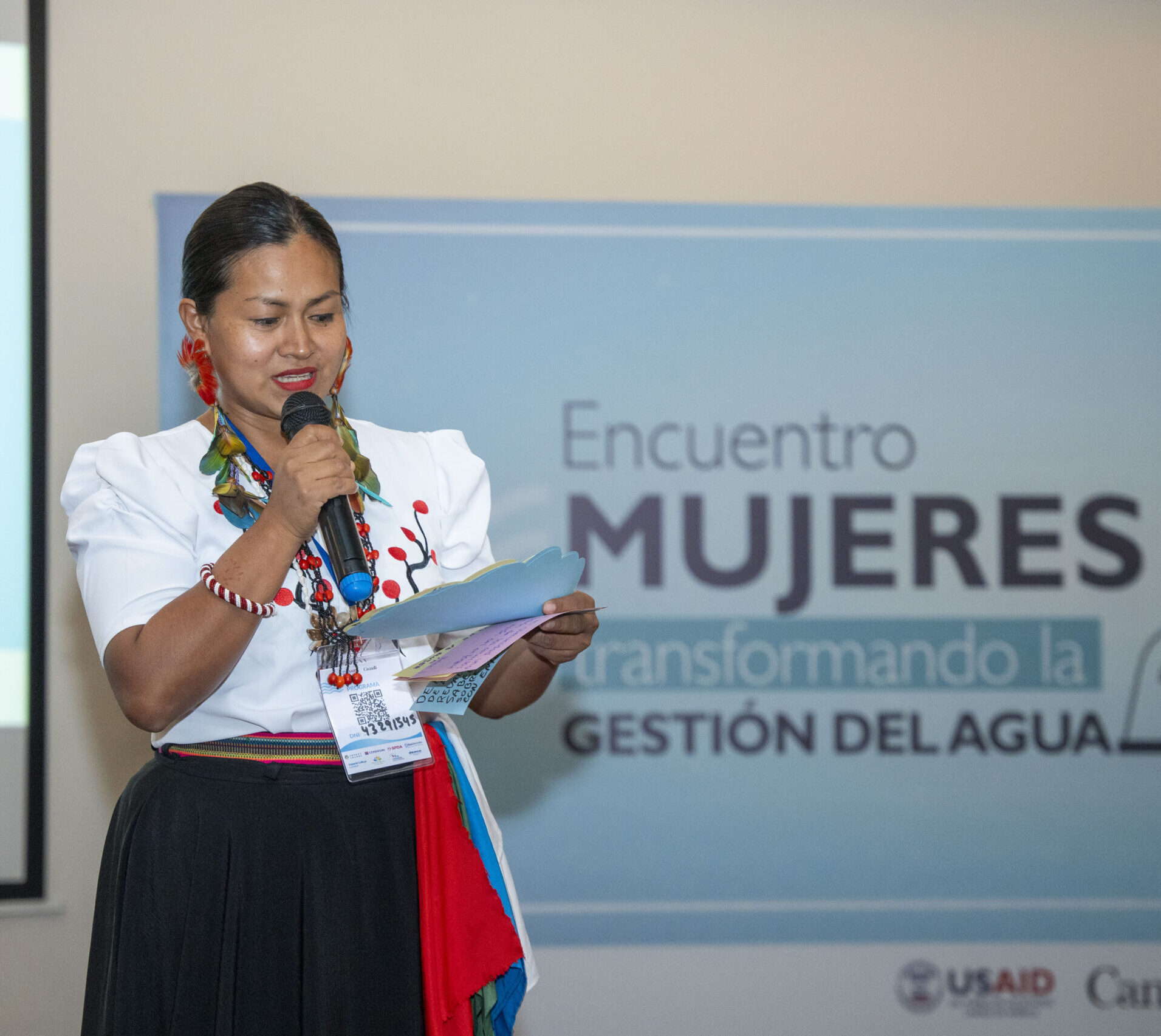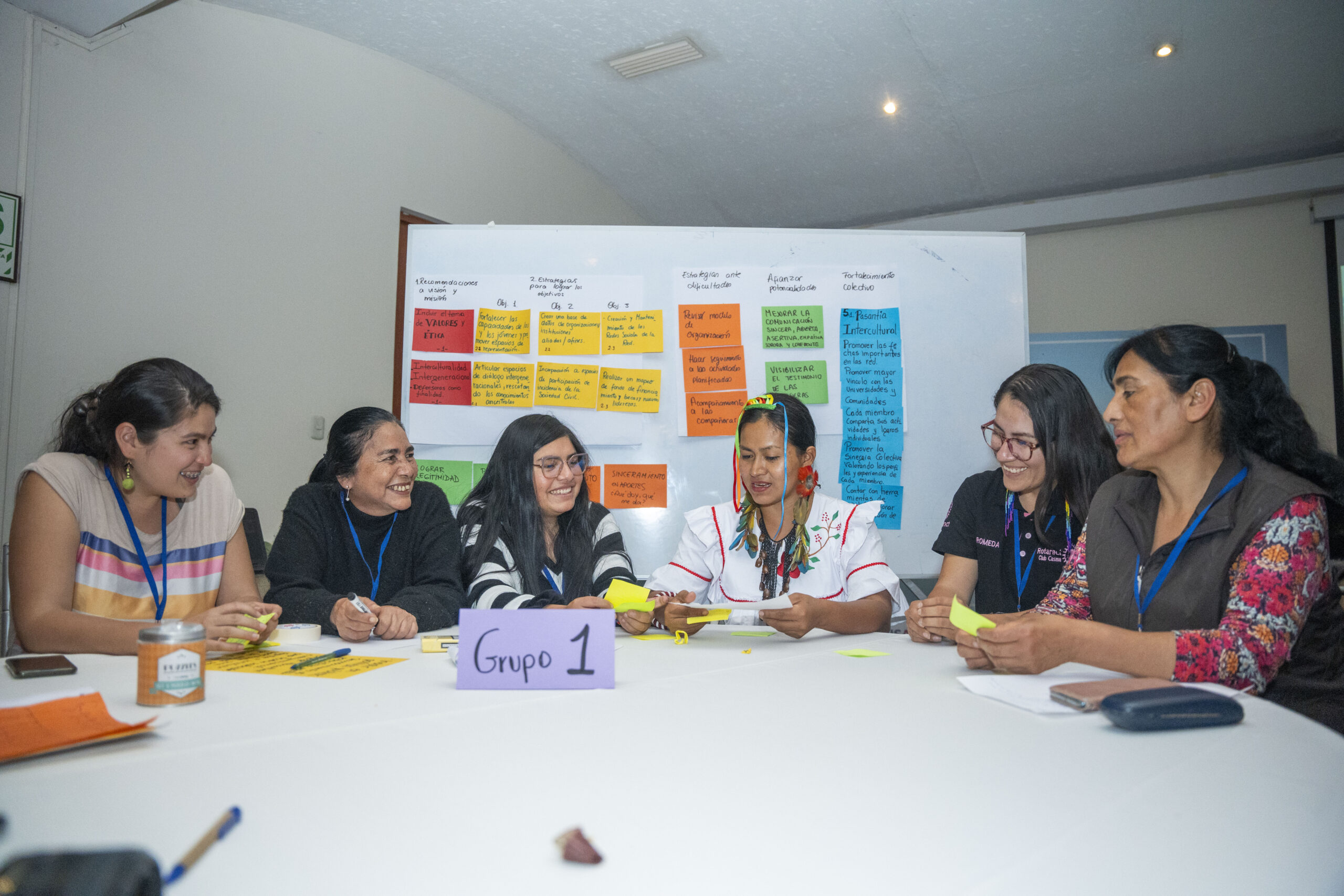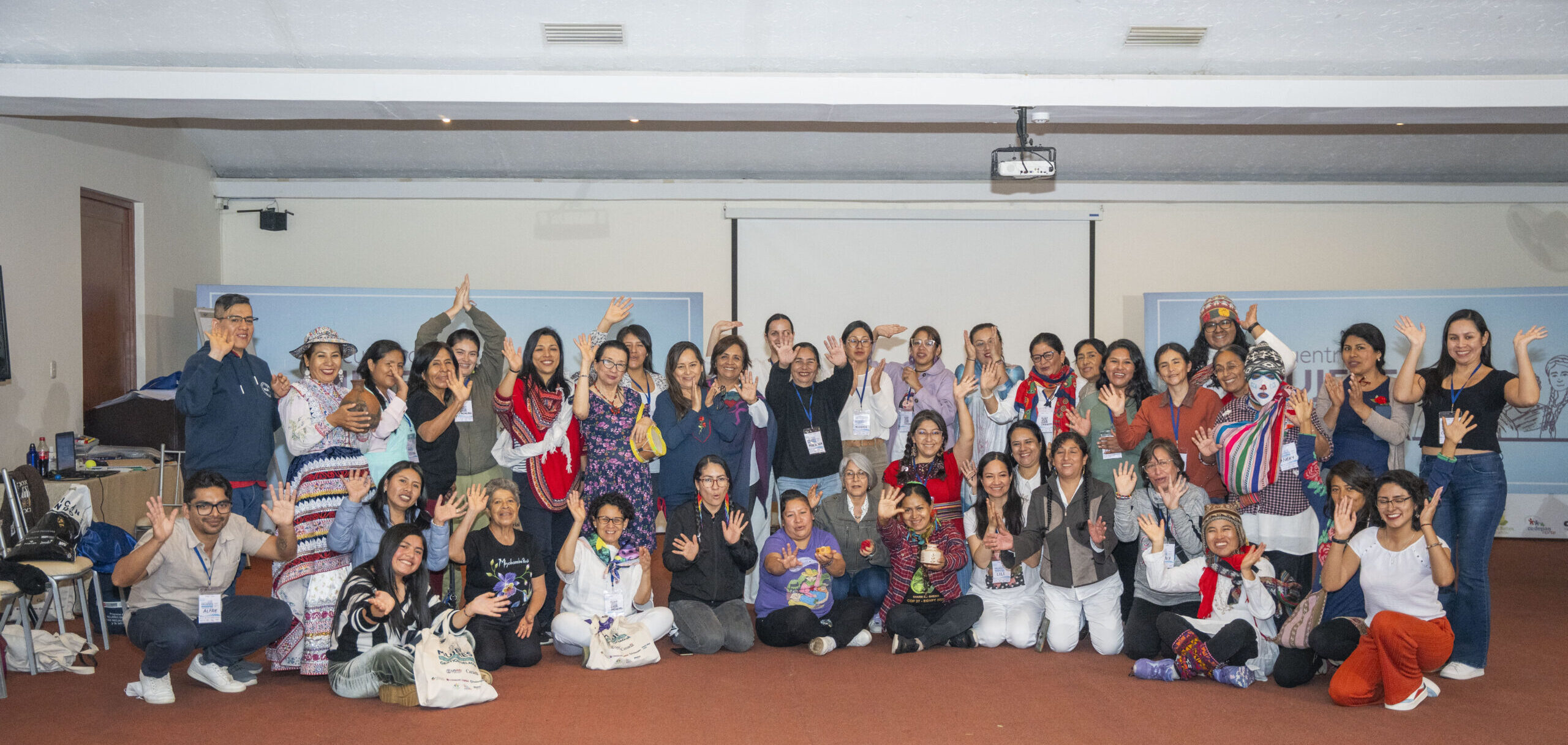As the first woman president of the Federation of Kechwa Chazuta Amazonia Indigenous Peoples (FEPIKECHA), Marisol García Apagüeño represents about 3,000 people from 11 communities in the San Martín region of Peru. Although half of this organization are women, until 2021 there was an organizational bylaw stipulating that only apus — predominately male indigenous authorities— could be president.
Even after this rule was changed and Marisol was elected to her position in 2022, she faced backlash. “They said I couldn’t assume the position [as president] because I have no one to leave my children with,” she said.

Marisol says that her experience participating in the Leadership Program for Women in Water Management, a program run through our Natural Infrastructure for Water Security (NIWS) project in Peru, strengthened her confidence to face doubts and criticisms like these.
“As president of FEPIKECHA, my priorities are water management, strengthening the leadership of young women, reforesting water sources, food security, and defending our territory and its resources,” she said.
Marisol was one of 25 women leaders in water governance from 12 Peruvian regions to gather in Arequipa, Peru this November for a meeting on “Women Transforming Water Management,” organized by Forest Trends with Peruvian partners CEDEPAS Norte, Desco, Descosur, Chaski Q’enti, and CONDESAN, and with the support of the United States Agency for International Development (USAID), the Government of Canada, and the D. N. Batten Foundation.
During the meeting, participants reconnected with their purpose and identity as leaders; reflected on the challenges they face in their territories, organizations and institutions; and renewed their commitments and strengthened ties to act collectively to improve water governance. This meeting—and the women’s Leadership Program that has run since 2020 – is part of our NIWS project’s strategy to put gender equality at the heart of our efforts to strengthen water security in Peru.
That’s because women are key players in water governance. Many women have a wealth of knowledge and experience in managing water and the natural infrastructure that supports it, and they play critical roles in the collection and management of water at the local level. They are the main users of water for domestic consumption, subsistence agriculture, family care, and basic sanitation. Yet, women in Peru are also more vulnerable to water risks like scarcity, floods, and landslides, and they are starkly underrepresented in decision-making spaces about water management. For example, a 2020 Forest Trends study found that that in 90 percent of key decision-making spaces on water management, there was less than 30 percent female representation.

Since 2017, the NIWS project has been working with its partners to address critical barriers to gender equality in natural infrastructure and water management in Peru, through a strategy that works both from the top-down and the bottom-up. To date, NIWS has partnered with Peru’s Ministry of Women and Vulnerable Populations to support and secure approval of new institutional policies and plans on gender equality from the major national water governance agencies, as well as the National Water Authority and the national water utility regulator, SUNASS.
This year, NIWS supported SUNASS to publish the first practical guidance for mainstreaming gender into utility programs that invest in their source watersheds and collaborated with the Ministries of Environment, Education, and Culture in Peru to produce guidance on how to mainstream gender into national climate action. Additionally, NIWS has developed practical models for mainstreaming gender equality in public investments on natural infrastructure, such as through the $8.4 million Huamanga project launched earlier this year by the Regional Government of Ayacucho.
The Leadership Program for Women in Water Management has been the cornerstone of NIWS’ bottom-up strategy for addressing gender gaps in water management. Since 2020, 138 women have graduated from this program. These women are also implementing their skills and ideas in their communities: already, 16 proposals to close gender gaps in water resources and natural infrastructure management have been implemented, with six more in the works.
The meeting in November connected many of the graduates of the Leadership Program with other local leaders driving innovative investments on the ground in partnership with NIWS, like Josefa “Chepita” Mesía, President of the Management Committee of the Compensation for Ecosystem Services Mechanism of Moyobamba, San Martín.
“It’s been wonderful to share not only experiences but also emotions, feelings, and memories —to be transported in space and time and to really understand what makes us women of water,” Chepita said. “This motivates us to pass this on to other women.”
Gender equity in water and natural infrastructure management means better outcomes for women and their families, for community resilience, and for local and national water security. As the NIWS project moves into the next phase of its work, project partners plan to continue implementing and scaling this critical work on gender equity as a central part of water and climate resilience.

Viewpoints showcases expert analysis and commentary from the Forest Trends team.
Connect with us on Facebook and Twitter to follow our latest work.
